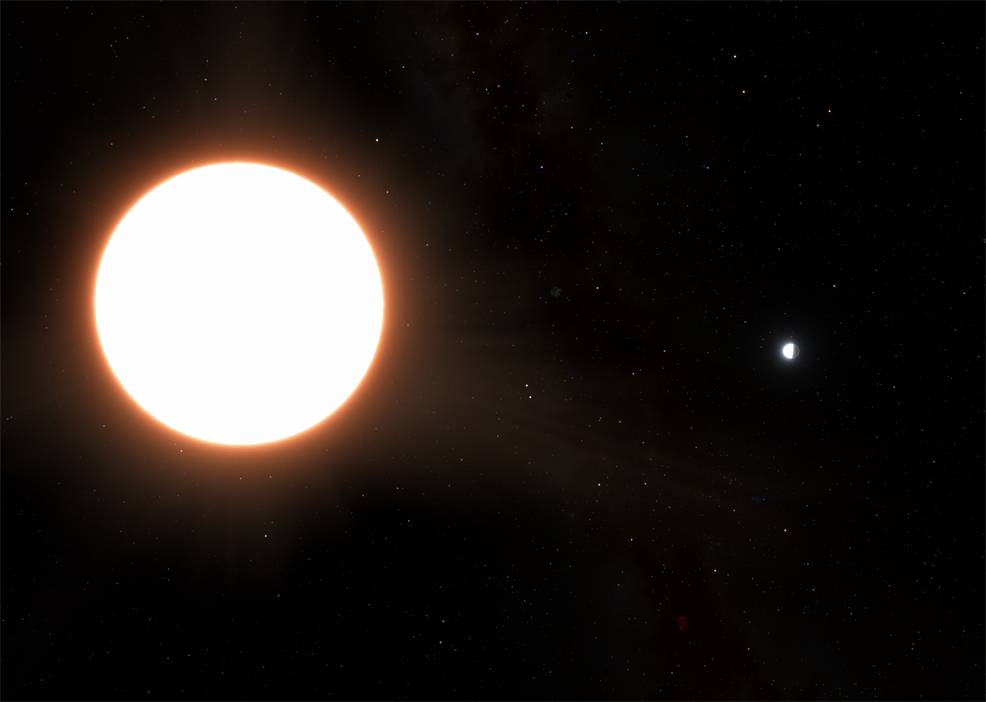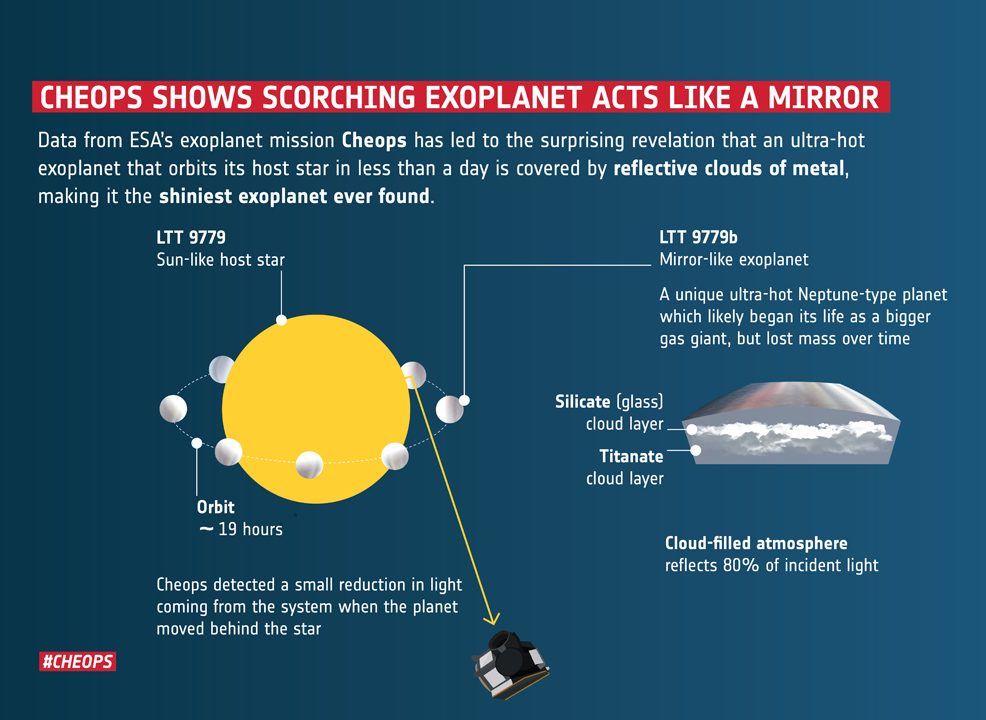
12th July 2023 Brightest known exoplanet is like 'giant mirror in space' The highest albedo ever observed for an exoplanet has been confirmed using the CHEOPS space telescope. The ultra-hot Neptune LTT 9779 b reflects 80% of incoming light from its star, due to the high metal content of its clouds.
Albedo is a measure of the reflectivity of an object or surface, usually expressed as a percentage. The concept appears frequently in astronomy, climatology, and environmental science. If a surface perfectly reflected all light hitting it, that surface would have an albedo of 100%. Conversely, if a perfectly dark surface absorbed all the light hitting it, the albedo would be 0%. Earth's albedo is influenced by factors including cloud cover, surface cover (such as ice, snow, water, and land), and atmospheric particles. Earth's average albedo is approximately 30% or 0.30, meaning that 30% of all sunlight that reaches Earth is reflected back into space, while 70% is absorbed. However, this value can vary over time – due to changes in ice cover at the north and south poles, for example. Venus, being much brighter than Earth, has an albedo of 0.76. Until recently, Kepler-1658 b held the record for the highest known albedo of any exoplanet beyond our Solar System, at 0.785. But now, an even brighter planet has been identified, described by astronomers as like a giant mirror in space. LTT 9779 b orbits the G-type (Sun-like) star LTT 9779, located 264 light-years away in the constellation Sculptor. The planet is classed as an "ultra-hot Neptune" due to its size (4.7 times Earth's radius), temperature (2,032°C, or 3,690°F), and gaseous composition. Astronomers first discovered LTT 9779 b in 2019, using the Transiting Exoplanet Survey Satellite (TESS). A more detailed follow-up study has now been published in this month's Astronomy & Astrophysics. The results show that the planet's albedo is 0.8, surpassing even Venus. This extreme brightness is likely caused by a "super metal-rich atmosphere", including the presence of titanate and silicate clouds, based on the researchers' climate model.
The results of this study are a surprise, according to the team. The planet lies in extremely close proximity to its star – a mere 0.016 AU, or 2,390,000 km, meaning it takes just 19 hours to complete one orbit. At such close range, its dayside temperature is more than 2,000°C (3,632°F). This should be far too hot for clouds to form, even metallic or glass clouds. "It was really a puzzle, until we realised we should think about this cloud formation in the same way as condensation forming in a bathroom after a hot shower," explains Vivien Parmentier, researcher at the Observatory of Côte d'Azur (France) and paper co-author. "To steam up a bathroom you can either cool the air until water vapour condenses, or you can keep the hot water running until clouds form because the air is so saturated with vapour that it simply can't hold any more. Similarly, LTT9779 b can form metallic clouds despite being so hot because the atmosphere is oversaturated with silicate and metal vapours." "Imagine a burning world, close to its star, with heavy clouds of metals floating aloft, raining down titanium droplets," says James Jenkins, astronomer at the Diego Portales University (Santiago, Chile) and paper co-author. "We believe these metal clouds help the planet to survive in the hot Neptune desert," added Sergio Hoyer, from the Marseille Astrophysics Laboratory (France). "The clouds reflect light and stop the planet from getting too hot and evaporating. Meanwhile, being highly metallic makes the planet and its atmosphere heavy and harder to blow away." This study relied on CHEOPS' high precision (its resolution is quadruple that of the earlier Kepler Space Telescope) and its 24/7 coverage: "Precisely measuring the tiny change in signal from the star eclipsing the planet was only possible with CHEOPS," says Sergio. Additional follow-up observations, over a wider wavelength range, could reveal more details about the planet and its atmospheric composition. The team hopes to use the capabilities of the James Webb Space Telescope, for example, as well as future telescopes like ARIEL (2029).
Comments »
If you enjoyed this article, please consider sharing it:
|








